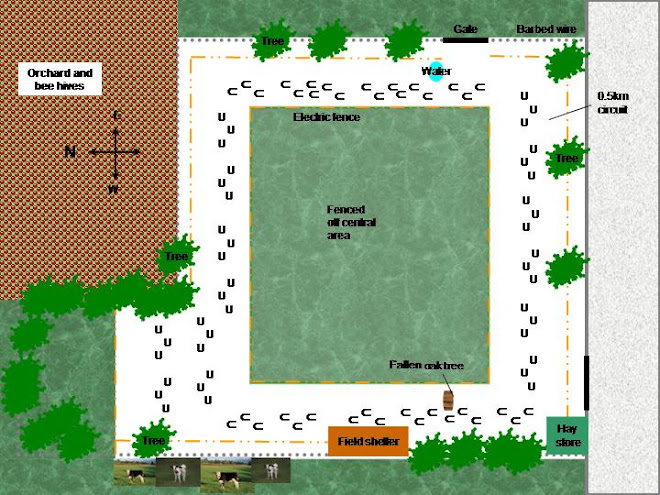There seems to be a hell of a lot of confusion about flare. Certainly conversations with my clients makes me realise it has become a dangerous term to use unless both parties are absolutely certain they are discussing the same thing. So for the purpose of this post I am going to try to be more specific.
Many of the horses I deal with suffer from white line stretch. This largely occurs because the lamellar bonds have been weakened, generally but not always from dietary disturbance. I'll cover this in more detail in a future post. For now stick with the idea that the lamellar bonds are compromised and a visual clue is that the white line is now wider than the edge of a credit card.
Other horses, in squaring off their toes create a hoof wall which has an uneven thickness. The solar view may show a thicker hoof wall at '10am' and '2pm'. For horses that don't move perfectly straight this might be '9am' and '1pm' or '11am' and '3pm' but you get the general idea. The hoof wall in between has been worn thinner, creating 'corners' at either end of the thin section.
Much more rarely and I don't really see this in the South East, although I have seen it on my travels, the hoof wall grows at significantly variable thicknesses.
And then there is what looks like
'flare' from the outside but is actually nothing of the kind. An update on this hoof is
here. Let's call this a 'deviation'.
On various occasions I have heard each of these scenarios described as 'flare'. As each needs a different approach I think it is important to label/understand them more clearly to ensure the correct techniques are adopted.
Starting with the last scenario first - a deviated hoof. More than one person has suggested t
hat this foot should be tackled by rasping the outer hoof wall. But check out the solar view - can you see what would happen if this were done? The hoof wall would be substantially weakened, possibly badly compromised and the deviation would still be there. Only with a weakened hoof wall the hoof would be less able to continue with the (fairly substantial) work load the horse currently enjoys - completely boot free over all sorts of surfaces.
Continuing my backwards theme....... the uneven thickness of hoof wall (which I don't see much of these days). If this is significant and likely to cause problems as it grows out then this can be dressed out, but extreme care needs to be taken as over enthusiasm can leave the hoof wall compromised. Less is more.
Squared off toes. I see this most often in horses that do a lot of straight line work on more abrasive surfaces and those that are seeking to bring their breakover back. If the 'corners' are left they can break off leaving a ragged and unsightly edge. Usually this causes the humans more problem than the horses. Sometimes, especially if the horn quality is very plastic, a nasty tear can result. If the hooves are very tough and the corners don't snap off then they can interfere with the horse's ability to move efficiently. Corners are dealt with as part of the normal roll process. The hoof should not need dressing higher up as there is no uneven wall thickness, just uneven wear.
White line stretch. Now bear in mind you are dealing with a horse that has compromised feet. Sometimes substantially compromised. Along with the
white line stretch there may be quite poor hoof quality, depending on how long the horse has been in distress. I have seen some real shockers where the whole capsule reminds me of one of those chicken eggs with a weak shell. Dealing with this by rasping the outer hoof wall is unhelpful at best.
There are but two things to do. Remove the causal factor which is usually but not always diet related. Grow down a tightly bonded hoof capsule (see posts on
healing angle). And trim the hoof according to AANHCP guidelines, removing only what nature would have done given the chance.

























